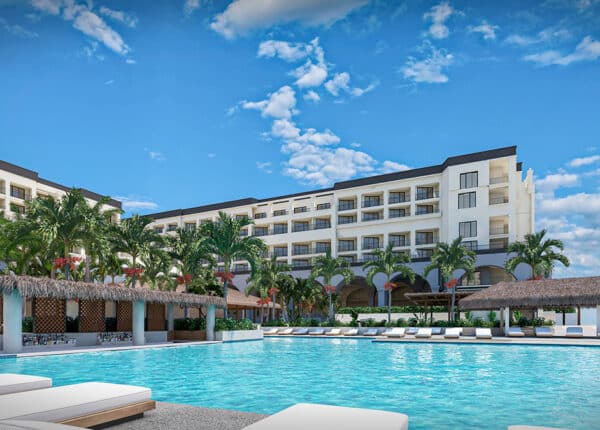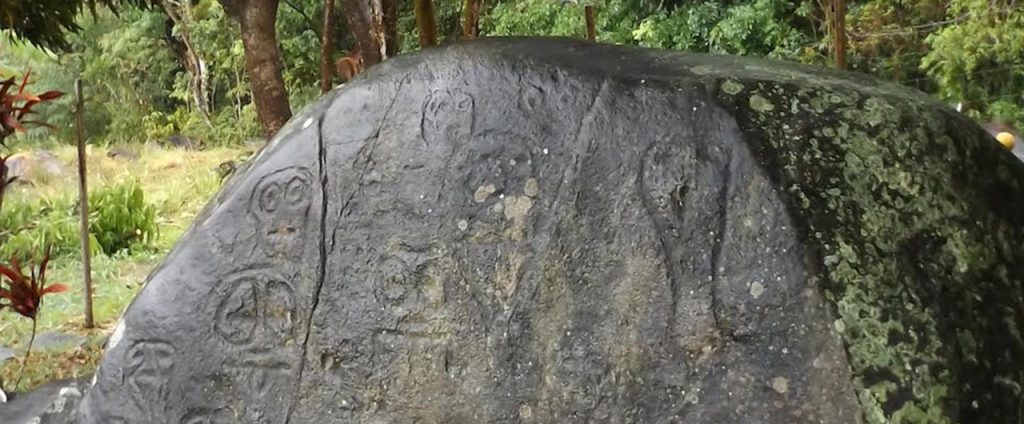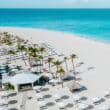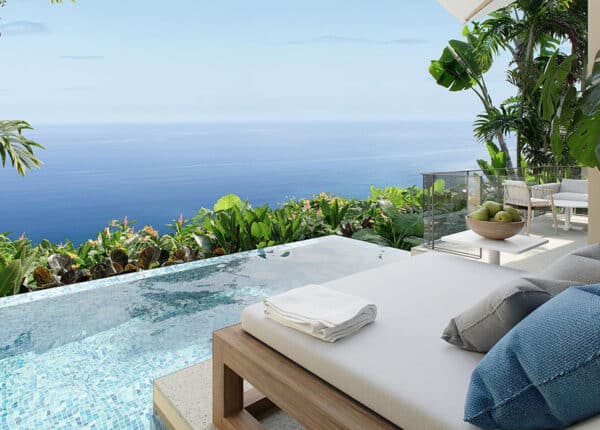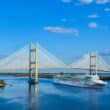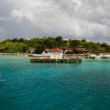A journey into the history of Martinique
By Sébastien Perrot-Minnot, PhD
CJ Contributor
It does not take a visitor long to realize that Martinique, “the Island of Flowers” as it is popularly known, is a land gorged with history. He discovers, in this French territory of the Caribbean, a profusion of monuments and antiquities, as well as a collective memory and strong creole traditions, which bear witness to a rich and convulsive past, marked by powerful colonial interests.
Yet in Martinique, of course, the work of man did not begin with the French colonization, in 1635, or the passage of Christopher Columbus, in 1502: at the arrival of the Genoese navigator, Natives populated this land they called “Iouanacaera”, “the Island of Iguanas”, as it seems.
The Amerindian cultures flourished on this island for centuries, or maybe millennia. Today, their legacy may seem discreet, but it offers the curious minds a fascinating travel through time and human diversity.

Map of Martinique, showing the location of the places mentioned in the text.
One of the places that invite us to undertake this travel is the Martinique Museum of Archaeology and Prehistory, housed in a beautiful colonial building, across from the wide La Savane Park, in downtown Fort-de-France (the capital of the Territorial Collectivity of Martinique). It contains a variety of crafts (including, in particular, decorated ceramics); reproductions of petroglyphs, among which enigmatic faces gaze at us through the centuries; models reconstituting aspects of the life of the native societies; and a substantial interpretation resorting to archaeology, history, ethnohistory and anthropology. Other pre-Columbian collections are in exhibition at the Ecomuseum of Martinique, established in an old rum distillery, on the charming beach of L’Anse Figuier; they come in large part from an archaeological site located in the same area, and corresponding to an important settlement.
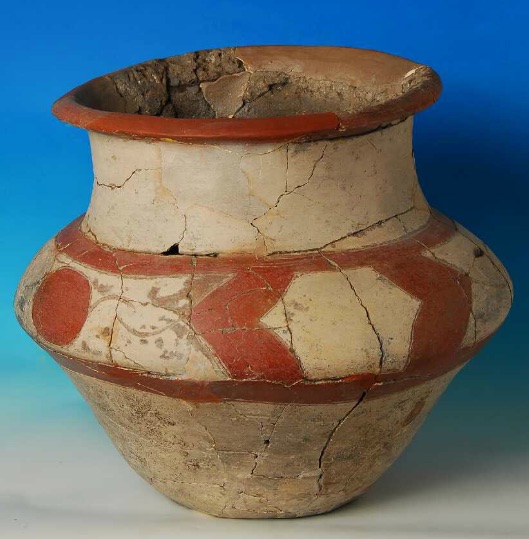
Pre-Columbian (Saladoid) vase from Martinique. Photo : Banque Numérique des Patrimoines Martiniquais
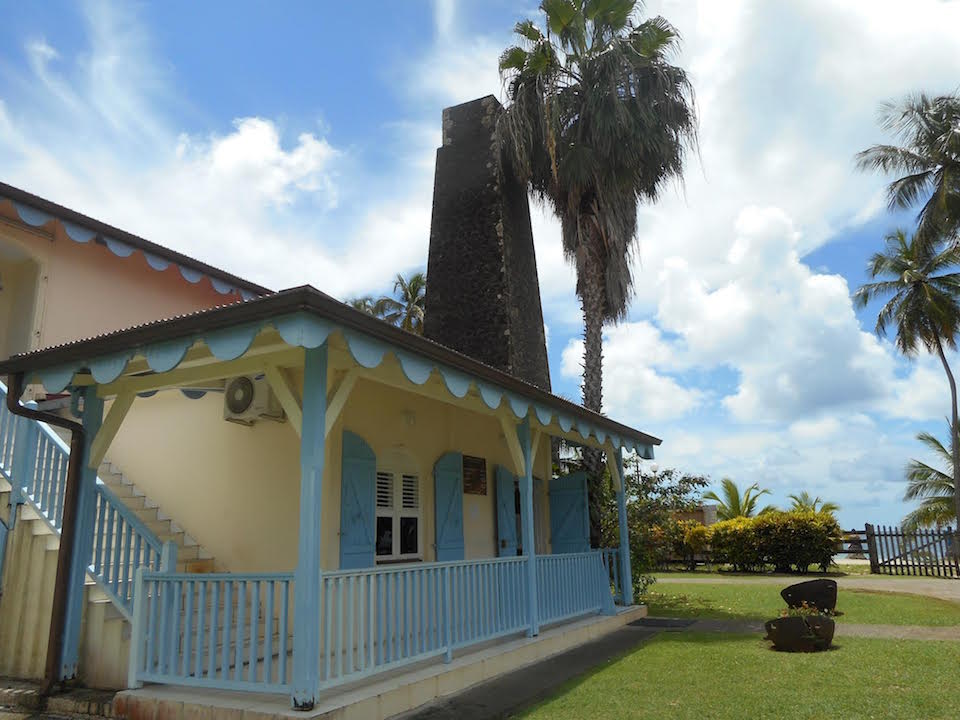 Entrance of the Ecomuseum of Martinique, in L’Anse Figuier. Photo: Sébastien Perrot-Minnot.
Entrance of the Ecomuseum of Martinique, in L’Anse Figuier. Photo: Sébastien Perrot-Minnot.
We currently know more than one hundred Amerindian sites in Martinique. They were discovered, in their great majority, on the coast. In most cases, they announce their presence, on the ground, with a fragmentary and eroded material, which will be hard to appreciate by a non-specialist.
Nevertheless, in certain places, noticeable manifestations were left into the rock, sometimes taking on a monumental aspect. At Montravail, on a hill with spectacular views of the southern coast of Martinique, and a few meters from a forest traversed by hiking trails, we find the only Amerindian archaeological site officially open to visitors, on the island.
There, five rocks show engravings representing mostly schematic faces. Another group of engraved rocks, more difficult to access, is situated on the edge of the flooded forest of Le Galion, close to the Atlantic (oriental) coast; the petroglyphs, which are very deteriorated, reveal an essentially geometrical style. Montravail and Le Galion were probably the scene of ritual activities.
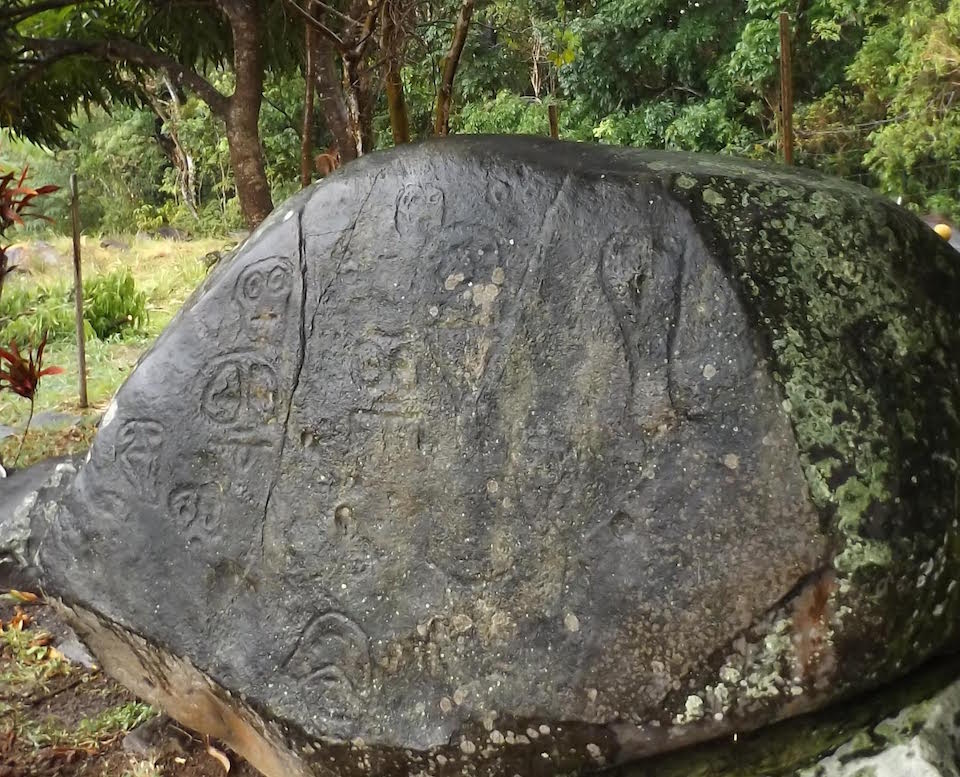
Engraved rock at Montravail. Photo: Sébastien Perrot-Minnot
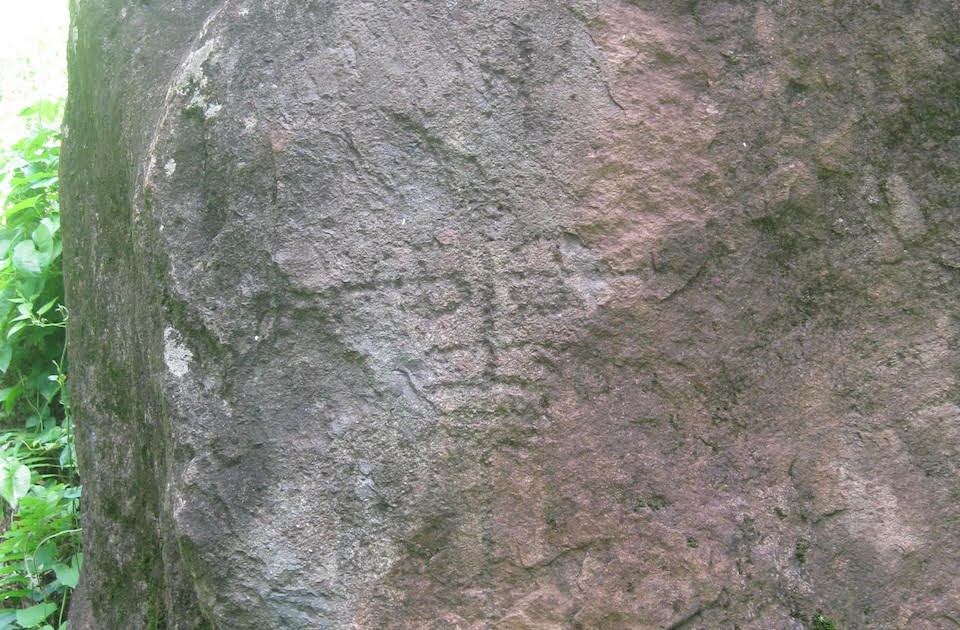
The rupestrian archaeological legacy also includes intriguing cupules, often carefully worked. Some of them can be observed on the singular “Roche à Bon Dieu” (“Good Lord Rock”) in Macouba, and on an outcrop bordering the sea, in L’Anse Figuier. A cupule extracted from this outcrop is presented to the public at the Ecomuseum. The rounded depressions covering the rock placed in front of the tourist office of Le Carbet, as for them, are more irregular and associated with slits; these marks are probably due to the repeated polishing of stone tools.
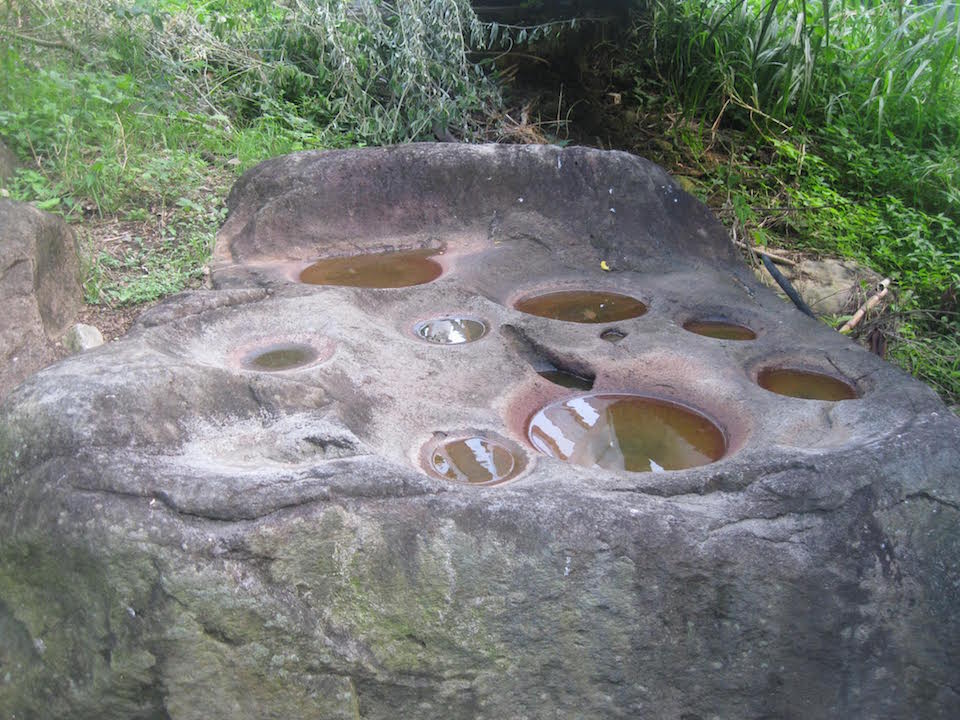
Cupules on the rock called “Roche à Bon Dieu”, in Macouba. Photo : Sébastien Perrot-Minnot.
Obviously, the Amerindian archaeology of Martinique has specific characteristics, such as the atypical rock art style of Le Galion. Yet in general, it fits within the broader context of the Antilles. As a matter of fact, the pre-Columbian cultures we recognize in the Martiniquan space spread widely across the archipelago. They originated in South America.
The antiquity of human presence in Martinique has been subject to discussions, the proposals of the researchers reaching five thousand years in the past. For now, however, the oldest occupations evidenced by archaeology “only” go back to the 1st century BC; they are attributed to the Saladoid, who began to colonize the Caribbean arc, from present-day Venezuela, in the 5th century BC, propagating agriculture, ceramics, village life and news symbols to the islands.
In the Saladoid (until around 700 AD) and Post-Saladoid periods, the pre-Columbian populations of the Antilles lived from farming (cassava being a staple food), gathering, hunting and fishing. In Martinique and the neighboring islands, they conserved a village, more or less egalitarian social organization. So, unlike the Taino, they did not create chiefdoms. Their standard village was composed of “carbets” (huts) and “ajoupas” (basic shelters) forming a square. In the center of the settlement stood the “taboui”, the collective house of the men, a place for the transmission of knowledge and initiations. The religious beliefs related especially to the “zemis”, the spirits of the nature and the ancestors, who could dwell in different objects and animals, and act on the elements. The Amerindians had both an intimate and intelligent relationship with the nature. They adapted successfully to their environment, while maintaining a high mobility, moving easily from island to island, and between the Antilles and South America.
From the 16th century onwards, exchanges were necessarily set up between the aboriginal people of Martinique and the Europeans. In the following century, the colonization of the island by the French quickly caused conflicts. A treaty concluded in 1639 formalized the partition of the island between the newcomers and the Carib Indians, but the colonists denounced it in 1658, slaughtering and expelling most of the Natives. Even so, Martiniquan Carib families are mentioned in historical sources until the beginning of the 19th century. Furthermore, through intermixing, the Amerindians have contributed to the creole cultures, which still today perpetuate traditions of pre-Columbian origin.
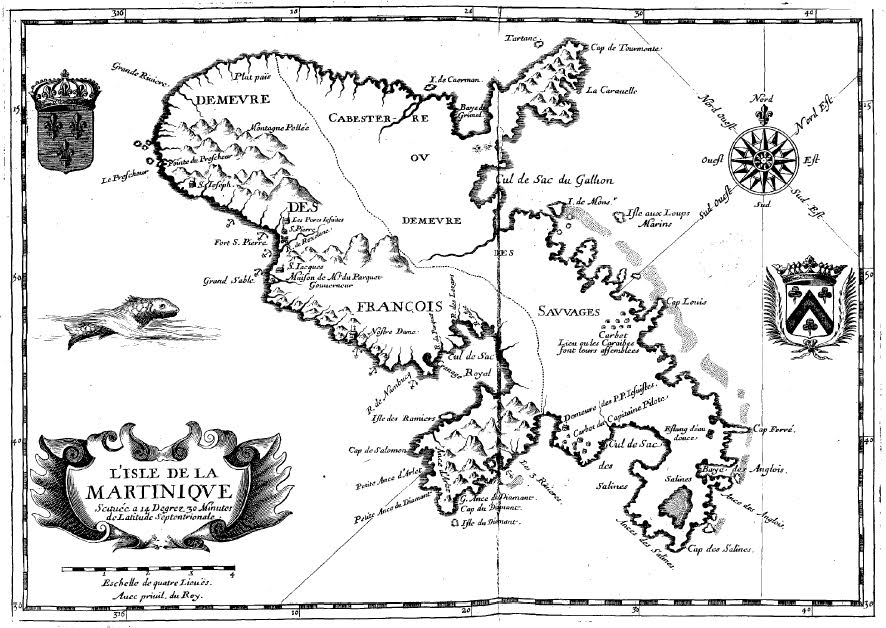 Map of Martinique published by Jean-Baptiste Du Tertre in 1654, and showing the partition of the island between the French and the Carib Indians.
Map of Martinique published by Jean-Baptiste Du Tertre in 1654, and showing the partition of the island between the French and the Carib Indians.
Sébastien Perrot-Minnot, PhD is an Archaeologist.
